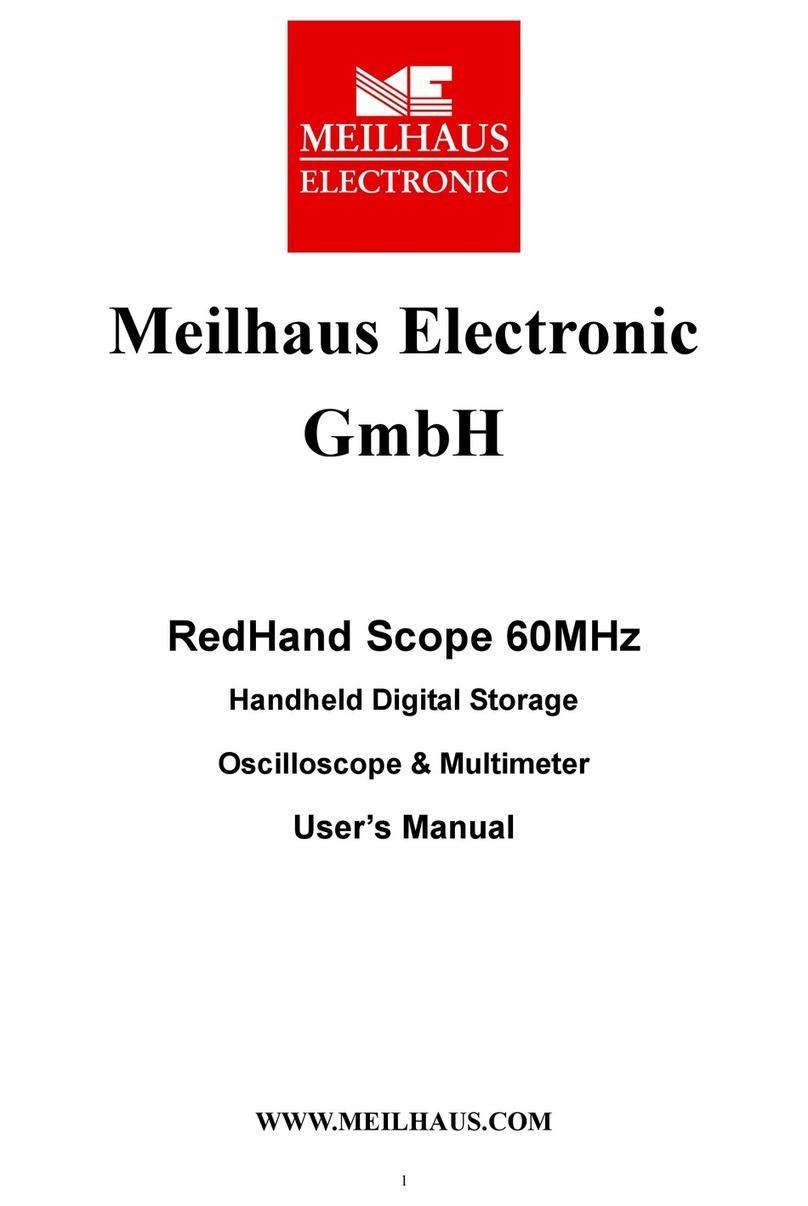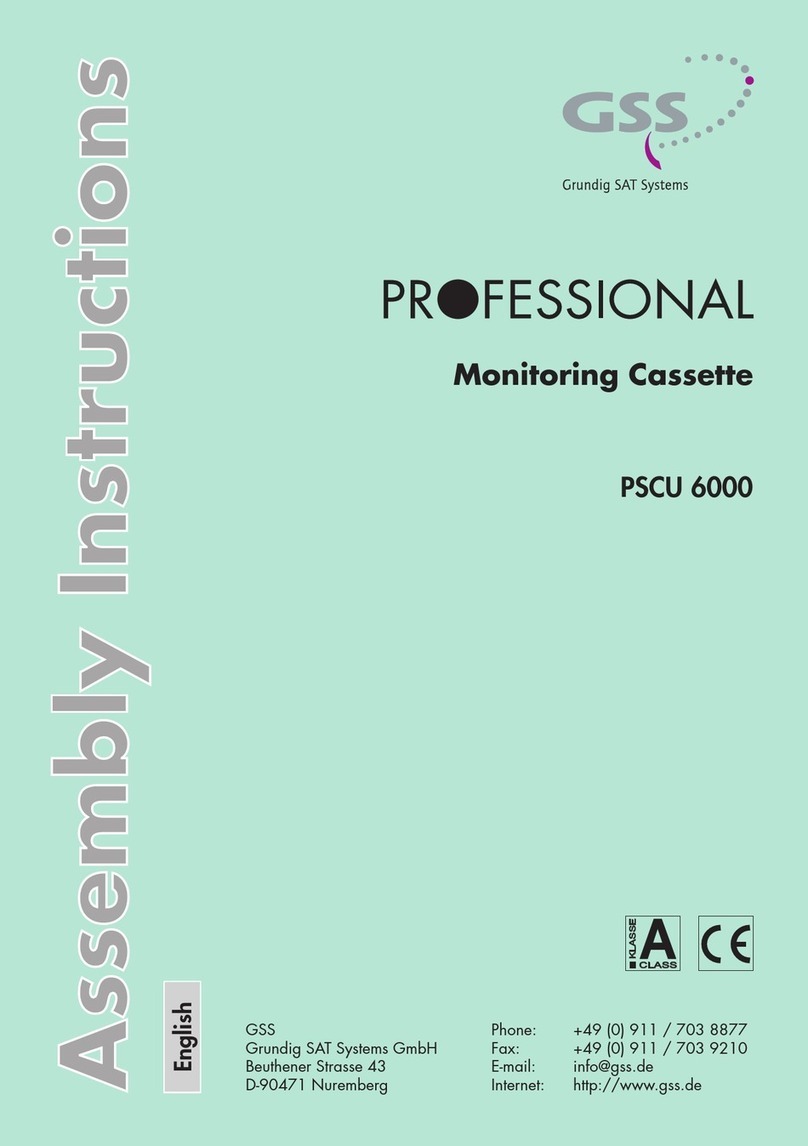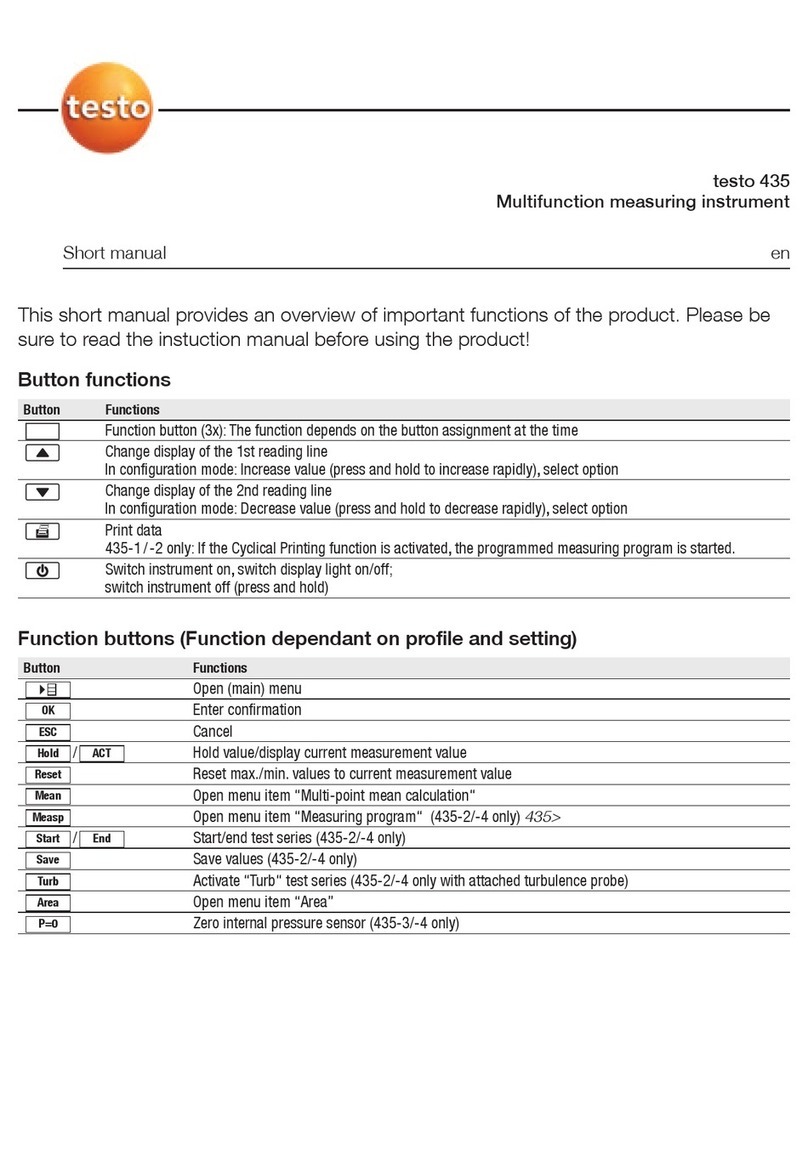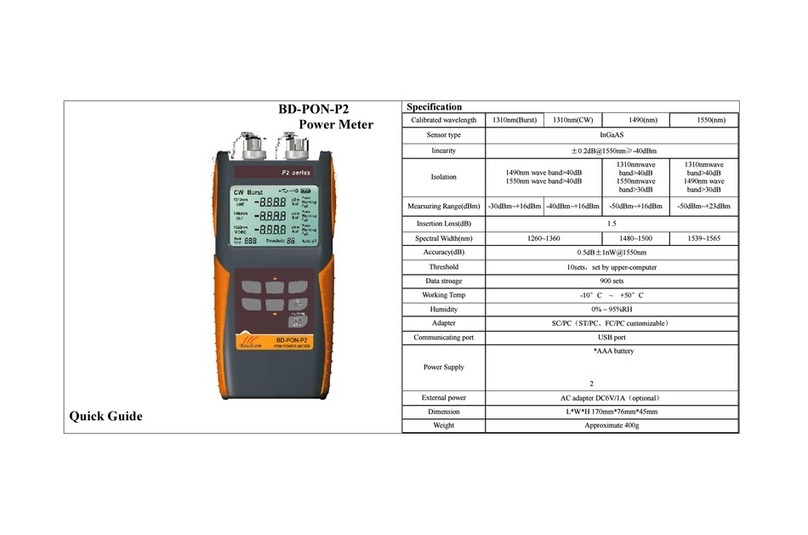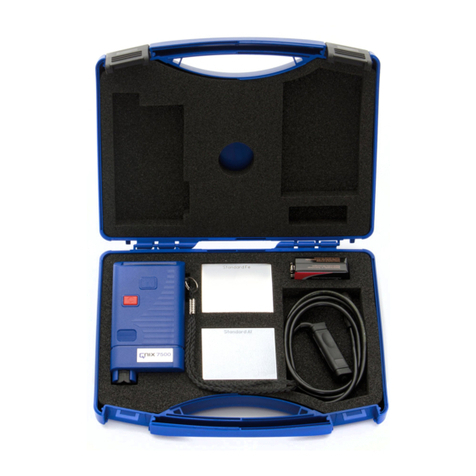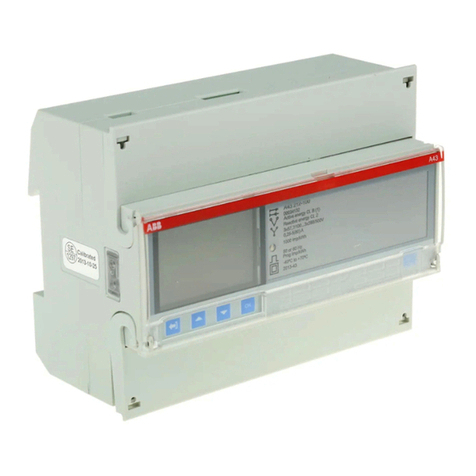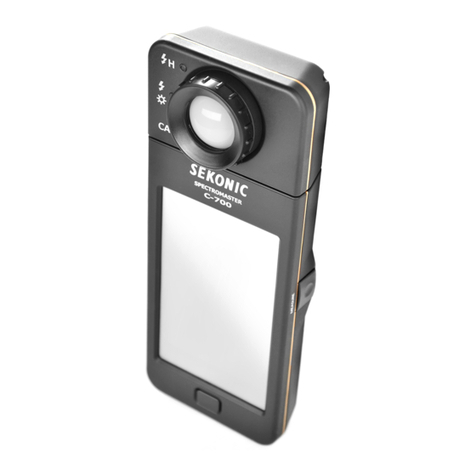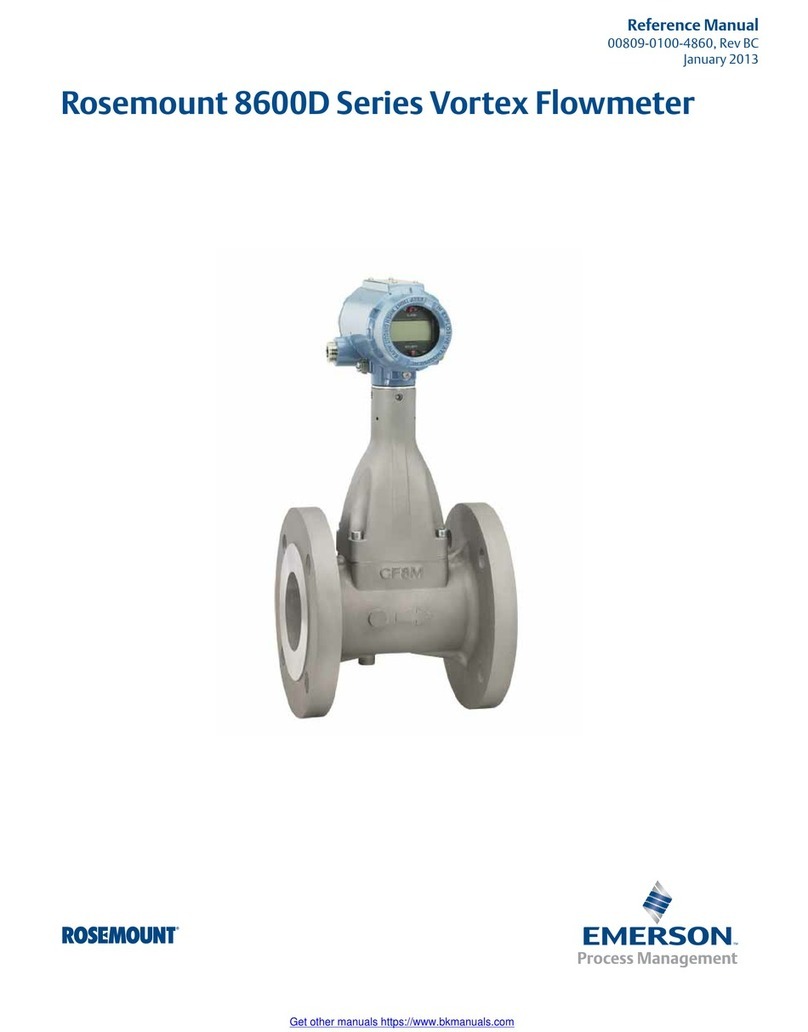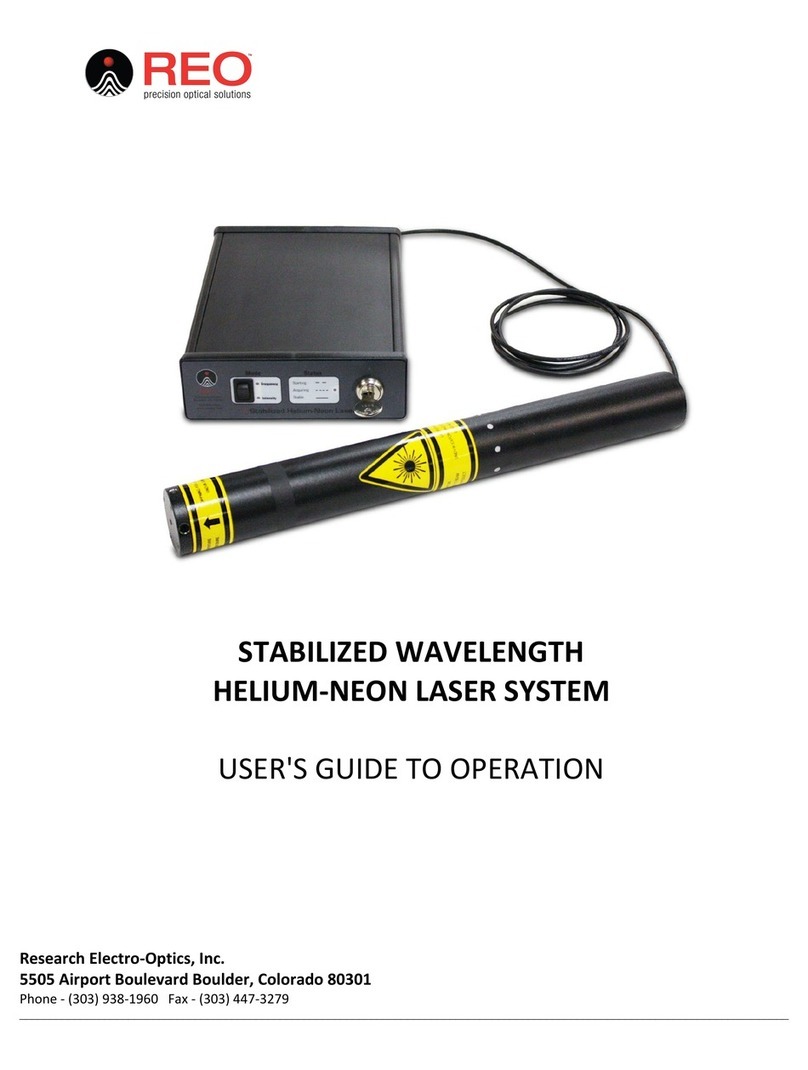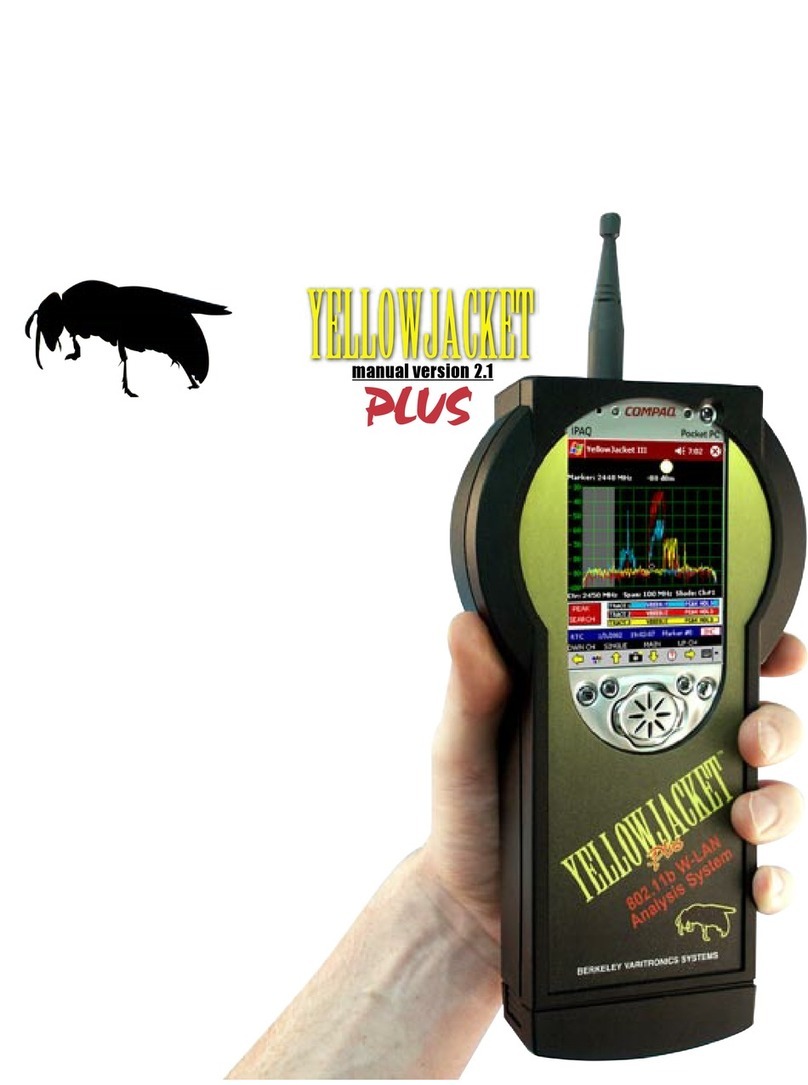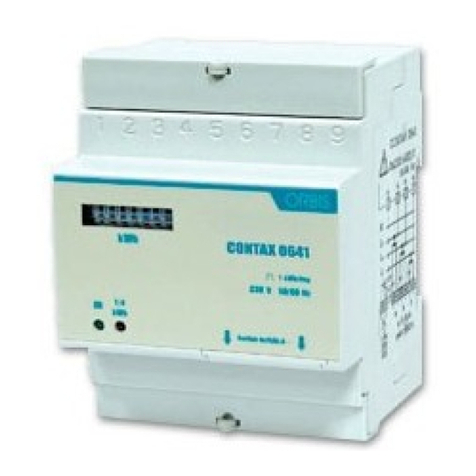Meilhaus Electronic MEphisto Scope User manual

Meilhaus Electronic Manual
MEphisto Scope
(UM202, UM203)
2-Channel USB-Universal-Measuring-Box/
-Instrument with MEphistoLab2-Software

Imprint
Manual MEphisto Scope
Revision 3.0
Revised: 27. Nov. 2019
Meilhaus Electronic GmbH
Am Sonnenlicht 2
D-82239 Alling bei München
Germany
www.meilhaus.de
© Copyright 2019 Meilhaus Electronic GmbH
All rights reserved. No part of this publication may be reproduced
or distributed in any form whether photocopied, printed, put on mi-
crofilm or be stored in any electronic media without the expressed
written consent of Meilhaus Electronic GmbH.
Important note:
The information contained in this manual has been reviewed with
great care and is believed to be complete and accurate. Meilhaus
Electronic assumes no responsibility for its use, any infringements
of patents or other rights of third parties which may result from
use of this manual or the product. Meilhaus Electronic assumes no
responsibility for any problems or damage which may result from
errors or omissions. Specifications and instructions are subject to
change without notice.
Note the Meilhaus Electronic general terms of business:
www.meilhaus.de/en/infos/my-shop/tob/
All trademarks acknowledged. All trademarks are property of their
respective owners.

Content
Content......................................................................3
1Introduction...........................................................6
1.1 Important Notes ............................................................... 6
1.1.1 Use in Accordance with the Requirements ....................... 6
1.1.2 Warnings ...................................................................... 7
1.2 Package Contents ............................................................. 8
1.3 Models MEphisto Scope ..................................................... 8
1.4 Short Description.............................................................. 9
1.4.1 Oscilloscope ................................................................ 12
1.4.2 Voltmeter ................................................................... 12
1.4.3 Analog Datalogger ....................................................... 13
1.4.4 Digital-Input/Output ..................................................... 14
1.4.5 Logic-Analyzer ............................................................. 15
1.4.6 Digital Datalogger........................................................ 16
1.4.7 Data-Display ............................................................... 17
1.4.8 Set up Offline Mode ..................................................... 17
1.4.9 Script Editor (Script Menu) .......................................... 18
1.5 System Requirements ..................................................... 19
1.5.1 Supported Hardware.................................................... 19
1.5.2 SD-Cards.................................................................... 19
1.5.2.1 General Information............................................ 19
1.5.2.2 Format ............................................................. 19
1.5.2.3 Speed ............................................................... 20
1.5.2.4 File Attributes................................................... 20
1.5.2.5 Termination of measurement............................... 20
1.6 System Requirements ..................................................... 21
1.7 Trigger Modes................................................................. 21
2Software Installation ............................................27
2.1 Connection ..................................................................... 27
2.2 User Interface ................................................................ 28
2.2.1 Project Management.................................................... 28

2.2.2 Standard Settings (Setup Menu)................................... 29
2.2.3 Views ......................................................................... 30
2.2.3.1 Logger.............................................................. 30
2.2.3.2 Display.............................................................. 30
2.2.3.3 XY-Display......................................................... 31
2.2.3.4 FFT-Display ....................................................... 32
2.2.3.5 Viewer .............................................................. 33
2.2.3.6 Device List........................................................ 33
2.2.3.7 Run/Stop........................................................... 34
2.2.3.8 Sampling ........................................................... 34
2.2.3.9 Amplitude ......................................................... 35
2.2.3.10 Probe ............................................................. 35
2.2.3.11 Offset............................................................. 36
2.2.3.12 Trigger............................................................ 36
2.2.3.12 Values ............................................................ 37
..................................................................................... 37
2.2.3.13 Analog Meter .................................................. 38
2.2.3.14 Panels ............................................................ 39
2.2.3.15 Digital-I/O........................................................ 39
2.2.3.16 Script Editor ................................................... 41
2.3 Programming interface .................................................... 42
2.3.1 General....................................................................... 42
2.3.2 Class name ................................................................. 42
2.3.3 Object name................................................................ 42
2.3.4 Main function (entry point)............................................ 42
2.3.5 General commands ...................................................... 43
2.3.6 Sampling..................................................................... 43
2.3.7 Measured values.......................................................... 44
2.3.8 Synthetic measurement values ..................................... 45
3Hardware ............................................................50
3.1 Functional diagram .......................................................... 50
3.2 Digital-I/O ....................................................................... 51
4Appendix .............................................................52

ASpecifications ........................................................................ 52
BError messages ..................................................................... 59
CPinouts ................................................................................. 61
DAccessories........................................................................... 62
ETechnical Questions ................................................................ 63
E1 Hotline ........................................................................... 63
FIndex ..................................................................................... 64

1Introduction
Valued customer,
Thank you for purchasing this device from Meilhaus Electronic. You
have chosen an innovative high-technology product that left our
premises in a fully functional and new condition.
Please take the time to carefully examine the contents of the pack-
age for any loss or damage that may have occurred during shipping.
If there are any items missing or if an item is damaged, please con-
tact us immediately.
Before installing the board in your computer, we recommend you
read this manual carefully, especially the chapter describing board
installation.
1.1 Important Notes
1.1.1 Use in Accordance with the Requirements
MEphisto Scope is intended to be used by qualified profession-
als.
Use a power supply that conforms to the specifications of the
MEphisto Scope.
Do not use the device without its housing or without its front
panel. It is not necessary to open the device in order to run it.
There are no control elements inside.
Only use fuses that conform to the specifications.
Do not operate the device if you suspect a fault.
Do not operate the device in damp environments. Keep the de-
vice surface dry and clean.
Ensure sufficient heat dissipation from the housing of the ME-
phisto Scope.
The device is not suitable as a children’s toy, neither should it
be used in the household or under unfavourable environmental
conditions (e.g. in the open). Necessary precautions to avoid
foreseeable improper operation are to be taken by the user.

1.1.2 Warnings
The MEphisto Scope has a maximum input voltage of ±10 VDC.
Measuring higher voltages may irreversibly damage the device and
leads to an invalidation of the warranty.
The MEphisto Scope is not gal-
vanically isolated, i.e. if it is run
„online“the device’s mass is di-
rectly linked to the computer’s
mass via the USB cable. If you
use a regular desktop PC, the
device’s mass is earthed via the
power cable (by protective con-
tact). However, if you use a laptop, there is no such reference to
ground potential. The same is applicable for „offline“-operation.
Therefore, it is imperative that the device be earthed by using the
earthing-connection on the back side.
The measuring of voltages higher than 42 V, especially power sup-
ply voltages, may only be performed by qualified professionals. If do-
ing so, use a high-voltage probe. Note that there is an electrical
connection between the shield of the BNC connectors and the de-
vice’s housing which is lead on to the PC-housing via the USB ca-
ble. That means that the housing of the MEphisto Scope may carry
230 V (by accidentally connecting the phase of the Schuko-plug
with the mass of your probe, for example). There is danger to life!
Please also follow the applicable standards and installation guide-
lines as well as the VDE-regulations. The Meilhaus Electronic GmbH
assumes no liability for any damage that results from incorrect in-
stallation, commission or handling during operation.

1.2 Package Contents
We take great care to ensure your delivery is complete. Nonethe-
less, please check the list enclosed to verify the contents of your
delivery. You should find included:
1 x USB-Box (metal housing) (UM202, UM203).
ME-Power-DVD with driver, measurement software „MEphisto-
Lab2“and PDF user manual.
Software: MEphistoLab2software for the MEphisto Scope,
supports all devices: Scope (time, XY, range), voltmeter, analog
data logger, logic analyzer, digital data logger, digital-I/O, for
Windows. Based on MCD tool monitor, incl. script editor.
Furthermore: MEphisto Scope is also supported by the driver
system ME-iDS. iDS is a prerequisite to use the MEphisto
Scope.
26-pin D-sub female socket.
USB connection cable (type A - type B).
UM203 additionally: mains connector.
ATTENTION: SD memory card not included in delivery.
Optional accessories: „ME-probe LF Pair“and „ME-UB-series“.
1.3 Models MEphisto Scope
Model
Description
Analog
Inputs
Digital-I/O
Data
Logger
Interface
MEphisto
Scope
UM202
USB
module
2
(Scope/XY/
range, volt-
meter,
data logger)
up to 24
(digital-I/O
data logger,
logic analyzer)
with PC/
notebook
USB 2.0
full-
speed
MEphisto
Scope
UM203
USB
module
2
(Scope/XY/
range,
voltmeter,
data logger)
up to 24
(digital-I/O
data logger,
logic analyzer)
with PC/
notebook or
on SD-card
USB 2.0
full-
speed
MEphisto
Scope
UM202-T
package
with bag and
accessories
2
(Scope/XY/
range, volt-
meter,
data logger)
up to 24
(digital-I/O
data logger,
logic analyzer)
with PC/
notebook
USB 2.0
full-
speed

MEphisto
Scope
UM203-T
package
with bag and
accessories
2
(Scope/XY/
range,
voltmeter,
data logger)
up to 24
(digital-I/O
data logger,
logic analyzer)
with PC/
notebook or
on SD-card
USB 2.0
full-
speed
1.4 Short Description
Overview: The following devices are included in the MEphisto
Scope:
Instrument
Data
Oscilloscope
spectrum analyzer
2 channels, 1 MS/s per channel, 16 bit, up to
500 kHz, range 200 mV...20 V. Time, range and
XY-depiction.
Voltmeter
2 channels, input range ±100 mV, ±1 V, ±10 V.
16 bit. Pointer indication (software). DC, AC true
RMS value.
Data logger
Analog and digital up to 100 kHz.
Logic analyzer
16 channels, up to 100 kHz, CMOS level.
Digital-I/O
24 TTL lines, programmable for each line as in-
put/output.
Model UM203 stand-
alone data logger
Recording of analog and digital data onto SD
card. Up to 100 kS/s (depending on card). Start
measurement by plugging in the SD card.
The MEphisto Scope is a universal combination-instrument combin-
ing a digital storage oscilloscope, a range analyzer/FFT, a voltme-
ter, a logic analyzer, a data logger and a 24 channel digital-I/O in a
compact steel metal housing. Power supply is granted via the PC-
USB-interface so that there is no need of an external power sup-
ply. The two analog inputs are equipped with BNC-sockets to which
standard oscilloscope probes may be connected. Each channel has
its own 16-bit A/D-converter so that you may sample up to 1MS/s
on two channels simultaneously. The input voltage is within ±10 V.
Depending on the operating mode, there are different trigger
modes.

The second generation of the MEphistoLab software provides a vir-
tual instrument panel that offers simply and quick access to all the
device’s functions.
You may choose between the following models (Tip: In case you
don’t have a MEphisto Scope, choose the menu „Extras –Options
–Driver“, then go to „Simulation“and try the software without
connected hardware:
„Oscilloscope“2 channels, max. 1 MS/s per channel, voltage
range: ±10 V (see chapter 1.4.1, p. 12)
„Volt meter“2 channels (ACeff/AC/DC)with up to 6 virtual
pointer instruments (see chapter 1.4.2, p. 12)
„Analog data logger“2 analog channels, max. 100 kS/s, volt-
age range: ±10 V (see chapter 1.4.3, p. 13)
„Digital-I/O“24 Digital-I/Os, configurable by bit, 5 V CMOS-level
(see chapter 1.4.4, p. 14).
„Logic analyzer“16 channels (D0…15), max. 100 kS/s per
channel, 5 V CMOS-level (see chapter 1.4.5, p. 15)
„Digital data logger“16 channels (D0…15), max. 100 kS/s,
5 V CMOS-level (see chapter 1.4.6, p. 16)
„Data viewer“Analyzes saved data (see chapter 1.4.7, p. 17).
„Offline mode“The model UM203 saves data onto a SD-card
(see chapter 1.4.8, p. 17).

„Script editor“Write your own code in C# and make auto-
mated measurements (see chapter 1.4.9, p. 18).
General note: The MEphistoLab2tries to implement setting de-
faults as accurately as possible. However, the hardware may not
implement all values accurately. In such cases, the oscilloscope ap-
proximates the setting to the desired value. After that, the
MEphistoLab corrects the settings that consequently display the
real value.
Please always follow the safety instructions while working.
Tip: You may change the program language if required: choose the
menu „Extras –Options –Language“(reboot is necessary). Find an
extensive description of the MEphistoLab2-Software in the online
support.

1.4.1 Oscilloscope
The module „Oscilloscope“has 2 measurement channels. They dis-
play frequency signals up to 500 kHz. All frequency signals meas-
ured above this limit are non-existent in reality. This should be kept
in mind when defining a completely unknown signal. Both channels
share a common time basis.
1.4.2 Voltmeter
With the help of a virtual pointer element, the total RMS value, the
DC or AC voltage component of the input signal may be displayed.
AC voltages may have very high peak voltages even at low RMS val-
ues. The high peak voltages must always be within the scale limits.
If this is not the case, the measurement result is falsified. If you do
not know the measurement signal, you should work with a high divi-
sion factor. The oscilloscope function allows you to get an image of
the wave pattern.

1.4.3 Analog Data-Logger
The module „Data Logger Analog“has two measurement channels.
They show signals with a signal frequency of up to 50 kHz. Image
frequencies measured above this limit do not exist in reality. This
should be kept in mind when defining a completely unknown signal.
Both channels share a common time basis.

1.4.4 Digital-Input/Output
The MEphisto Scope has 24 Digital-I/Os. Each channel may be con-
figured independently as input or output.
When you turn on the device, all channels are configured as input.

1.4.5 Logic-Analyzer
The module „Logic-Analyzer“shows 16 digital channels with a fre-
quency of up to 50 kHz. Image frequencies measured above this
limit do not exist in reality. This should be kept in mind when defin-
ing a completely unknown signal. In case of doubt, an observation
through the oscilloscope may shed light but only up to a frequency
of 500 kHz.
All digital channels use a common time basis.
In the „Logic-Analyzer“mode, the channels D16 to D22 are re-
served for special functions on the pins 19 to 25. If required, they
are configured as output and therefore shouldn’t be connected.
The levels of the signals must meet the requirements of the 5 V
CMOS. In case they don’t, you need to connect a level converter.

1.4.6 Digital Data-Logger
The module „Digital Data logger“shows 16 digital measurement
channels with a frequency of up to 50 kHz. Image frequencies
measured above this limit do not exist in reality. This should be
kept in mind when defining a completely unknown signal. In case of
doubt, an observation with the oscilloscope may shed light but only
up to a frequency of 500 kHz.
All digital channels use a common time base.
In the „Digital Data logger“mode, the channels D16 to D22 are
reserved for special functions on the pins 19 to 25. If required,
they are configured as output and therefore shouldn’t be con-
nected.
The levels of the signals must meet the requirements of the 5 V
CMOS. In case they don’t, you need to connect a level converter.

1.4.7 Data-Display
The module „Data-Display“displays saved data. How this data is
displayed depends on the type of data. Analog signals are displayed
in a window that resembles the oscilloscope mode. Digital signals
are displayed in a window that resembles the Logic Analyzer mode.
1.4.8 Set up Offline Mode
The MEphisto Scope UM203 may save data onto an SD-card that
has a capacity of up to 2 GB. After applying the supply voltage, the
MEphisto Scope uses the settings that were last made online. In-
serting the SD-card starts the measurement process.
Notes: Whether offline or online via PC, the way how the MEphisto
Scope (UM203) measures is exactly the same. However, there are
some aspects to consider.
The most important difference between online and offline mode is
the reference potential. Within the online-mode, the device is con-
nected to the mass of the PC. If it is a Desktop-PC, the device’s

mass as well as its housing is partially earthed via the PC-power
supply.
This reference does not exist if the device is connected to a lap-
top or in offline-mode. Please note that external earthing and ex-
tra care is absolutely necessary for your safety.
Another difference is the maximum sampling rate. In the logger
modes, the maximum rates may –in rare cases –lead to incorrect
records. For further recommendations on how to handle SD-cards,
please refer to the corresponding chapter.
In offline-mode, the digital data logger has a maximum sampling
rate of 2.5 kHz. This isn’t reported back to the MEphistoLab2if
settings are made. Please make sure to set a valid sampling rate
on the SD-card. If necessary, the device will reduce the rate auto-
matically before starting the measurement.
Offline-modes vary depending on the firmware version of the device.
From version 3.10 on, all modes may be used in offline-mode.
If a chosen mode is not available, the device signals no availability in
offline-mode. Instead, it displays the POST Code 15. It cannot be
reset to standby from this condition. Please connect the device to
the PC and set an available mode.
In offline-mode, the logger modes only support pre-trigger, i.e. a
start via trigger-mode. It is not possible to end the recording.
1.4.9 Script Editor (Script Menu)
Using the Script-Engine, the Mephisto Scope automatically per-
forms measurements and calculates further measurement values.
Scripts may be edited, loaded and saved, as well as started and
stopped.

1.5 System Requirements
1.5.1 Supported Hardware
Meilhaus Electronic MEphisto Scope (models UM202 und UM203),
firmware-version from 2.10 on.
Both analog inputs are equipped with BNC-sockets for standard
oscilloscope probes. Each channel has its own 16-bit A/D-converter
that facilitates simultaneous sampling rates of up to 1 MS/s on
both channels. The digital port serves as input for the Logic-Ana-
lyzer. It can be found on the backside of the 26-pin plug connector.
The device is supplied with power via the USB-port of the PC. In
case it is connected to the PC via USB-hub, the hub needs its own
voltage supply. The device signals a current consumption of 490mA
max. This is required so that operation is safe even with shorts on
the digital port.
For the autonomous operation of the model UM203 an external
power supply with 5V, 500 mA is required. In this mode, the device
may also be supplied with a powered USB hub without connection
to the PC.
1.5.2 SD-Cards
1.5.2.1 General Information
The MEphisto Scope accepts SD-cards with a capacity range from
8MB to 2 GB. A functioning of cards with a capacity of 8 MB or
16 MB cannot be guaranteed for all manufacturers. Capacities of
more than 2 GB are not supported.
1.5.2.2 Format
All SD-cards should be formatted prior to using them in the ME-
phisto Scope. Only if formatted, the cards may use the full range of
files or the full capacity for recording. This particularly affects
highly fragmented file systems that have often been described with
many small files.
The MEphisto Scope accepts the formats FAT16 and FAT32. Some
operating systems offer FAT32 as standard for data storing units
starting from 32.5 MB. However, FAT16 should generally be pre-
ferred. Otherwise, only limited functionality may be available.

For historical reasons, SD-cards with a capacity of 32 MB and less
are factory-equipped with the outdated file system FAT12. The ME-
phisto Scope is unable to read this format und signals a POST Code
6. Please reformat these cards. FAT16 is automatically used by all
modern operating systems to format data storing units with a ca-
pacity of more than 4 MB.
Some programs allow you to change the file format as well as the
management system of a data storing unit. However, many SD-
cards work best using the factory-defined structure. The Meilhaus
Electronic GmbH strongly advises you to abstain from such
changes. There have been occasional malfunctions and defects in
relation to wrong formatting. However, it must be stressed that
this does not affect the file system (FAT12, FAT16, FAT32 etc.)
but only structures like boot sector, partition information etc.
1.5.2.3 Speed
In order to achieve the highest possible data rates, you should use
fast-operating cards. However, it is not necessary to use ex-
tremely fast-operating cards (attributes „extreme“, „ultra“, etc.).
A very high speed may only be reached on certain conditions. The
MEphisto Scope does not support these conditions. We recom-
mend to test the measuring condition. Over-speed may produce in-
correct values that occur separately or in blocks even though the
card does not indicate any error. A typical symptom are short
„bursts“at regular intervals. This does not occur, however, at
sampling rates under 20 kHz. The modes Oscilloscope and Logic-
Analyzer are not affected. They work full-speed with any type of
card.
1.5.2.4 File Attributes
The MEphisto Scope generates a unique file name for each meas-
urement. The name is based on the date and time the file was cre-
ated. In the logger-modes, the file’s first time-stamp is set on the
time when the file was created. Therefore, it is approximately the
moment you insert the card which is recorded. The second stamp
indicates the last time you accessed the file and may be used to
define the end of the measurement. All information given by the
other modes always refers to the end of the measurement. The
time stamps are attributes of the files themselves not of the data.
If the file is manipulated, the stamps change, too.
1.5.2.5 Termination of measurement
If you terminate the measurement early by turning off or taking out
the card, not all measurement data is saved. In logger-modes, it is
This manual suits for next models
2
Table of contents
Other Meilhaus Electronic Measuring Instrument manuals
